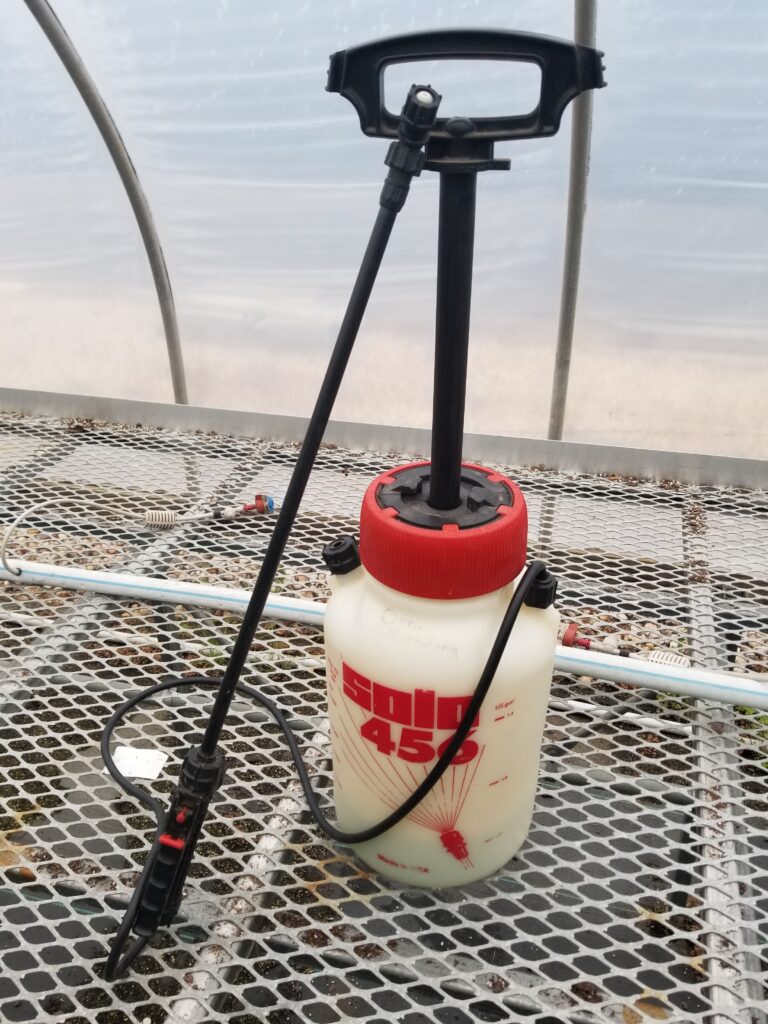Round-Up: It Always Pays to Read the Label!
go.ncsu.edu/readext?1021178
en Español / em Português
El inglés es el idioma de control de esta página. En la medida en que haya algún conflicto entre la traducción al inglés y la traducción, el inglés prevalece.
Al hacer clic en el enlace de traducción se activa un servicio de traducción gratuito para convertir la página al español. Al igual que con cualquier traducción por Internet, la conversión no es sensible al contexto y puede que no traduzca el texto en su significado original. NC State Extension no garantiza la exactitud del texto traducido. Por favor, tenga en cuenta que algunas aplicaciones y/o servicios pueden no funcionar como se espera cuando se traducen.
Português
Inglês é o idioma de controle desta página. Na medida que haja algum conflito entre o texto original em Inglês e a tradução, o Inglês prevalece.
Ao clicar no link de tradução, um serviço gratuito de tradução será ativado para converter a página para o Português. Como em qualquer tradução pela internet, a conversão não é sensivel ao contexto e pode não ocorrer a tradução para o significado orginal. O serviço de Extensão da Carolina do Norte (NC State Extension) não garante a exatidão do texto traduzido. Por favor, observe que algumas funções ou serviços podem não funcionar como esperado após a tradução.
English
English is the controlling language of this page. To the extent there is any conflict between the English text and the translation, English controls.
Clicking on the translation link activates a free translation service to convert the page to Spanish. As with any Internet translation, the conversion is not context-sensitive and may not translate the text to its original meaning. NC State Extension does not guarantee the accuracy of the translated text. Please note that some applications and/or services may not function as expected when translated.
Collapse ▲Glyphosate is a commonly used post emergent, broad-spectrum herbicide in the residential and commercial landscape today. Recently I have heard from some folks struggling to find glyphosate available for purchase under the traditional Round-Up product trade name in big box retailers. This is due to a company-wide response from Bayer (the parent company which owns Round-Up products) in regards to the litigation the company is facing regarding product safety for their glyphosate products. Round-Up labeled products formulated with glyphosate are still available at local agriculture supply stores (all commercial audiences should still be able to find glyphosate products), but homeowners might have a harder time finding glyphosate formulated Round-Up products in big box retailers from here on out. In 2021, Bayer released a five-point plan that summarizes their response to litigation over their Round-Up product, with one of the points being:
“To further reduce future litigation risk, we have transitioned the manufacturing of our glyphosate products for the U.S. residential L&G (lawn and garden) market to new formulations that have different active ingredients. We have taken this action exclusively to manage litigation risk and not because of any safety concerns. The vast majority of claims have come from residential L&G users, so this step largely eliminates the primary source of future claims. This action does not impact any of our glyphosate-based agriculture or professional products.”
This company-wide response can help explain what we are seeing on store shelves across the country as supply chains replace the glyphosate formulated Round-Up products with other active ingredients. To be clear, for several years there have been alternative lawn and garden Round-Up products formulated with other ingredients to give benefits such as longer residual control since glyphosate is bound rapidly and does not remain active in the soil profile for extended periods of time. However, Round-Up products at the big box retailers aimed at homeowners are now almost exclusively formulated with active ingredients such as triclopyr, fluazifop, diquat and others instead of glyphosate.
You may be asking yourself, what does this mean in terms of product effectiveness? Do these other active ingredients work similarly to glyphosate, and what differences are there in terms of safety and efficacy? Please refer to this great factsheet that describes some of the alternatives to glyphosate and their efficacy/safety concerns. To summarize, yes there are differences in the performance of these alternative chemistries. For example, drift concern and activity level on specific weeds can differ depending on the active ingredients included in the product. It always pays to read the label to know what specific safety precautions you need to take to protect yourself, and others. The label will also clearly state other information such as the approved use sites, product application rate, and other helpful information to make sure that the product can work effectively and safely. Always remember that the label is the law, and be sure to follow all parameters for product use as specified by the label. Please see additional resources below for more helpful information regarding glyphosate, the EPA review process, and other regulatory agency responses.
Resources:
Glyphosate Technical Factsheet: National Pesticide Information Center
U.S. EPA: Actions & Regulatory History- Glyphosate
EPA Product Registration Review: What is involved in approving a pesticide product for use?
Are There Alternatives to Glyphosate for Weed Control in Landscapes?





